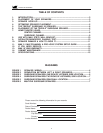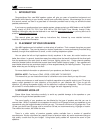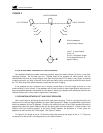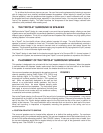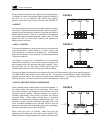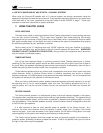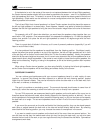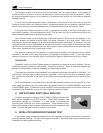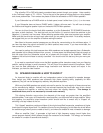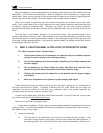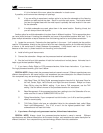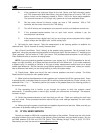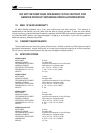
If the television is not in the center of the room (or not centered between the Left and Right speakers),
the Center channel speaker should still be as close as possible to the screen -- even if it is outside the left
and right speakers (such as a TV located in a corner of the room outside the stereo spread of the left and
right speakers). Good results can be achieved in unusual configurations when the Center speaker is as
close as possible to the screen.
The Left and Right front channel speakers in a Home Theatre system should be placed the same as
the left and right speakers in a stereo setup. Some listeners, however, may prefer to reduce the distance
between the left and right speakers to bring the size of the acoustic image closer to the size of the screen
image.
For example, with a 25" direct-view television, you would want the speakers closer together than you
would with a 100" projector. One recommendation is to separate the speakers by 1.5 times the diagonal
screen size; another is to place the left and right speakers to create a 45 degree angle with the main
listening position.
There is a great deal of latitude in this area, as it is one of personal preference (especially if you will
listen to music without video).
It is also preferred that the speakers be equidistant from the listening position. Equidistant usually
means that when the center speaker is on top of the television, the left and right speakers will sit in front
of the set (they will be farther from the wall behind the TV than the center speaker). Ideally, the speakers
should be at the same height as the screen, but it is much more important that all three speakers be at as
close to each other's height as possible. If the center is much higher or lower than the other speakers, the
effect can be distracting. Angling, or toeing-in the speakers, to aim at the listening position often improves
imaging.
When using a Center channel speaker, you have extra flexibility in placing the left and right speakers,
as the Center channel speaker will tie most dialog and effects directly to the screen.
SURROUND CHANNELS
You can achieve good performance with your surround speakers placed in a wide variety of room
locations. In general, they should be either adjacent to or behind the main listening position, located
higher than the listener's heads. They can be mounted on either the side walls or on the back wall, flush
to the wall, on shelves, on brackets, etc.
The goal is to achieve an enveloping sound. The surround channels should seem to come from all
around you, rather than seeming to come from behind you only or directly from a speaker.
For non-THX surrounds, we recommend starting with speakers on the side walls of the room, two to
three feet above the listeners' heads, either directly adjacent to the listening position or behind it. You can
aim the speakers to fire towards each other (across the listening area), or you can aim them to fire towards
the back wall at an angle. The surround speakers should not be in front of the main listening position if
possible.
If you mount the surrounds on the side wall behind the listening position, they can be aimed towards
each other or angled towards the back wall or the side wall surface directly behind them. By reflecting
sound behind the listening position, you may increase the sense of envelopment in the sound.
If you want or need to mount speakers on the back wall of the room, there are several options. You
can aim them so that they fire towards each other (so they fire along the back wall); you can aim them
towards the front wall of the room; or you can angle them so they fire toward the side walls. Symmetrical
arrangements work best.
SATELLITE SPEAKER
9




